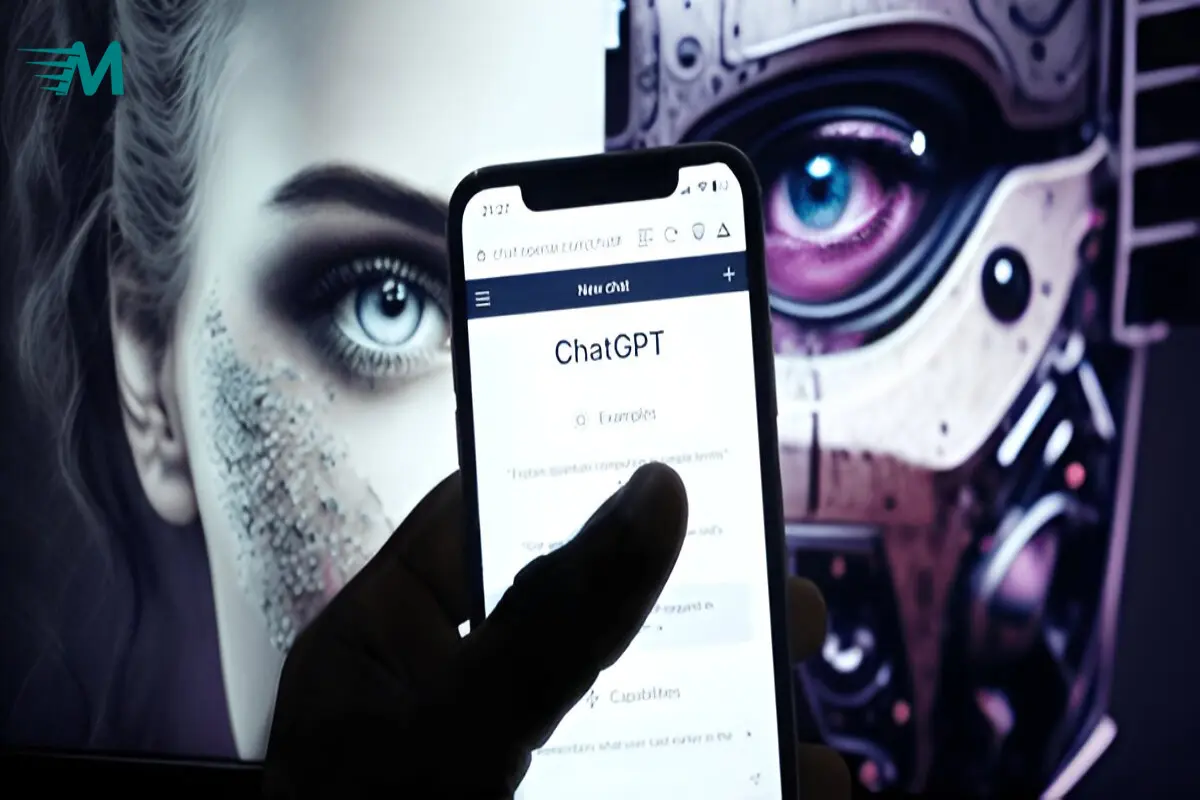ChatGPT Explained: What It Can & Can’t Do
1. Introduction
ChatGPT explained simply: its responses look like they are made by a person. OpenAI’s ChatGPT applied artificial intelligence to give responses that are easy for people to read. You give it commands or ask it things, and it responds clearly, with thoughtful and appropriate answers. If you tell it to write an email, work out a math problem, or write a poem, it seems to act like a very wise assistant.
ChatGPT gets its name from the words ‘Chat Generative Pre-trained Transformer.’ It is in a group of large language models (LLMs) that have quickly become known for how well they speak and how much they know. From the time it was introduced to the public, ChatGPT has changed how we look at machines and language. Being one of today’s hottest AI discussions, it’s due to its big strides in how people communicate with AI.
We’ll walk you through everything about ChatGPT in this blog, starting with its basics, its functions, its limitations, examples of its use, and whether it’s useful for your writing and work needs.
2. How ChatGPT Works (In Brief)
Understanding how ChatGPT really works is necessary to fully explain it. The main idea behind ChatGPT is that it relies on the GPT architecture, where GPT represents Generative Pre-trained Transformer. This model is a deep learning solution created to deal with natural language processing.
It gets “pre-trained” by processing far-reaching datasets that consist of books, encyclopedias, web content, articles, and even code resources. Because of its pre-training on lots of content, the model learns about language rules, meaning, style, and certain technical words.
ChatGPT operates by picking up patterns found in the data it is given. When you give it a question or statement, it doesn’t understand the answer as a person would. In fact, it figures out the next word that seems most fitting based on what it has learned. As a result, the model can create responses that seem like they come from a person, though this creates some gaps, which we’ll talk about later.
So when you think about how ChatGPT works, here’s the simplest explanation: it’s a system that uses text training to figure out the best response to match your input.
3. What ChatGPT Can Do (Capabilities)
We’re going to discuss what ChatGPT can do — the strengths that make this AI useful. The following are specific ways ChatGPT is used in real life:
- Content Writing: Blogs, Scripts, Emails
Content writing is something that ChatGPT is used for more than other tasks. Users can get blog posts, marketing text, YouTube scripts, business correspondence, and other content from it. Content creators use ChatGPT to write faster and keep their style the same across many pieces of content.
- Answering Questions and Tutoring
ChatGPT is regularly used by students and learners as a substitute for a tutor. It is able to simplify hard topics for easier understanding. ChatGPT was helpful in answering academic questions in math, grammar, and history.
- Summarizing, Translating, and Rephrasing Text
Need to translate a paragraph? Or update a sentence so it reads in a businesslike manner? This is one of the things ChatGPT can do. It is helpful for making bullet points, writing summaries, and rewriting sentences to keep the meaning the same.
- Coding Help and Debugging
Developers often ask ChatGPT to help write small bits of code, solve issues with bugs, or clarify coding logic. Those just starting out in languages such as Python, JavaScript, or HTML get a lot of support from it.
- Brainstorming Ideas and Generating Outlines
People in writing, marketing, and entrepreneurship use ChatGPT to come up with new content ideas, business plans, product names, and campaign slogans. You can use it to make simple outlines that help start a project.
- Simulating Conversations and Role-Playing
ChatGPT helps therapists, trainers, and creatives run different scenario simulations. ChatGPT is able to act as a client, interviewer, or historical character to help with dialogue practice.
- Assisting in Business Tasks
ChatGPT can take on everyday business paperwork and create clear client proposals and FAQs for website users. The following are real-life cases where ChatGPT makes work faster and more professional.
4. What ChatGPT Can’t Do (Limitations)
While it’s easy to be amazed by ChatGPT, we need to know what it is unable to do. These are some obvious limits of ChatGPT:
- Real-Time Data or Current Events
Real-time information is not available to ChatGPT unless you use a version that can connect to the internet. After it was updated ChatGPT can’t tell you about any new events. This means asking for news from today will not give you a reliable answer.
- Fact-Checking or Guaranteed Accuracy
The model will not check facts or include references unless you tell it to. Such instructions do not guarantee no made-up answers will appear, though. Its strengths and weaknesses are serious points of discussion for people who work in school and law fields.
- Emotional Intelligence
Knowing the situation is not the same as sensing emotions. It doesn’t have the ability to respond with empathy, a drawback for tasks involving therapy or social interactions.
- Original Research or Firsthand Experience
When looking for original reporting, research studies, or field studies, ChatGPT is not able to provide these. It doesn’t have the ability to run tests or look up data that wasn’t included in its training.
- Tasks That Require Expertise in a Particular Domain
Without special prompts and expert information, handling technical topics like advanced legal writing or medical exams can be hard for it. The tool needs organized and detailed information to do such work.
- Basic versions of ChatGPT do not allow browsing the internet.
Without access to the internet, ChatGPT AI tool isn’t able to look for live references or visit websites to respond to requests.
5. ChatGPT in Action: Use Case Examples
For a clearer view of ChatGPT uses, see these case studies from many disciplines:
- Students
Essay writing, concept clarifications, and solving math tasks can all be helped by ChatGPT for students. It functions as an aid for understanding and structuring content, but textbooks still play their role.
- Marketers
It is easier to make ad copy, SEO meta descriptions, and blog titles using ChatGPT AI tool. It supports coming up with fresh ad concepts and improving messaging.
- Developers
Developers use ChatGPT to write code, spot and fix bugs, or study new programming subjects. It’s most useful for people who are just beginning to learn to code.
- Writers
ChatGPT is used by writers for fiction, articles, and poetry writing. The model is also able to make outlines, add plot twists, or reshape sentences in a chosen style.
- Entrepreneurs
Startup founders apply the tool to write investment pitches as well as generate ideas for products. It is a very effective use of ChatGPT by startup founders.
6. Risks & Misconceptions
Although there are many advantages, ChatGPT has risks and people may misunderstand its abilities:
- Over-Reliance on AI Content
Relying too much on ChatGPT for writing can cause people to lose their ability to think critically and be creative. You should see the tool as helping you, but not doing everything yourself.
- Potential for Misinformation
At times, the system may provide information that seems right but is either inaccurate or has bias. Healthcare, law, and education are particularly affected by this; it shows where ChatGPT comes up short.
- Privacy Concerns
Your sensitive data could be processed using servers from other companies. It is important to protect your personal, legal, or confidential data while using ChatGPT AI tool.
- Ethical Considerations
There are growing ethical discussions about generative AI because of issues like authorship and deepfakes. Before using ChatGPT in situations where errors can’t be tolerated, make sure you know its advantages and disadvantages.
7. Final Thoughts: Should You Use ChatGPT?
So, do you think you should make use of this tool? We should think about the advantages and disadvantages of ChatGPT, as discussed so far:
Benefits
- It speeds up the process of writing content and documents.
- Helps brainstorm and ideate
- Accessible and easy to use
- Supports learning across subjects
Limitations
- Doesn’t ensure accuracy or citation
- It is not built to support decisions dealing with emotions or ethics.
- It can’t perform the job of skilled research or expert examination.
Use ChatGPT as a helpful tool, not as something that will take over human roles. Humans should be in charge of creativity, feelings, and ethics, while the AI deals with repetitive tasks. If you know what ChatGPT can do and use it wisely, you can achieve a lot.
Regardless if you’re a teacher, programmer, business leader, or student, knowing how ChatGPT works can let you use this game-changing tech in smarter ways.
8. FAQs
- Is ChatGPT safe to use?
Yes, but avoid entering confidential or sensitive information. There are privacy policies in place, but it’s best to err on the side of caution.
- Can ChatGPT write essays?
Yes. One of the major uses of ChatGPT is essay writing. However, always review and fact-check the content it provides.
- Is ChatGPT always accurate?
No. What ChatGPT can’t do is guarantee 100% factual accuracy. Always cross-reference with trusted sources.
- How is ChatGPT different from Google?
Google finds information by indexing web pages. ChatGPT generates text based on patterns learned from data. It provides answers in conversational form rather than search result links.



